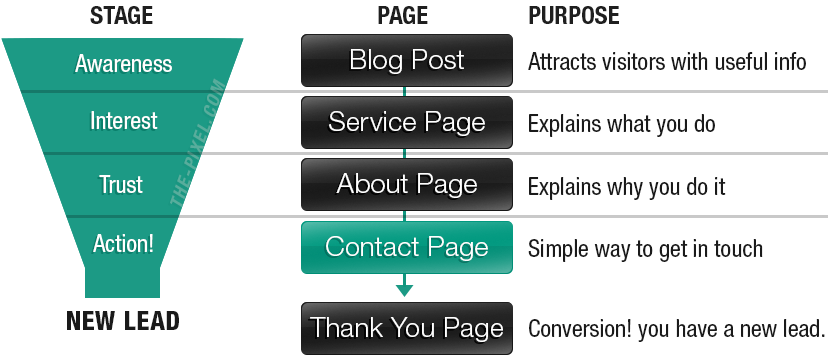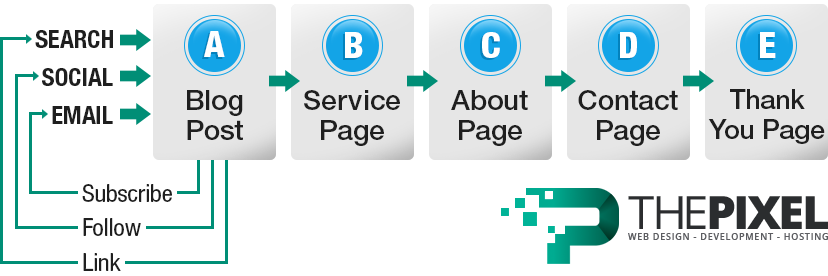How-To Optimize a Website for Lead Generation
How-To Optimize a Website for Lead Generation
The best source of traffic for your website begins and ends with lead generation and SEO.
Many websites fail to accomplish their primary goal: attracting and keeping the attention of their target market. Small businesses interested in improving the performance of their corporate website should consider the aspects of website design we will discuss in this article.
Strategize: Tie the design to marketing goals
Many companies confuse their marketing goals with their sales goals. While the two are related, they are different sides of the same coin. Marketing involves attracting the attention of potential buyers; sales involve converting potential buyers into customers. Companies should design their websites to accomplish their primary marketing goal: generating interest in their products.
Marketers use a variety of web design strategies to attract the attention of their target market. For some consumers, flashing images of available products are a sufficient marketing effort, but more sophisticated audiences may prefer website content that educates or entertains them. In either case, market research should be conducted, and the website design and functions must be tailored to the preferences of the target market.

Optimize content: Let the design showcase your best work
Perhaps the best use of a website is when it showcases a particular firm’s successes via an online portfolio. Especially for service professionals like architects or designers, a website provides the opportunity to present both images and content that display their best works and explain the methodology they used to achieve it.
A company can showcase as many projects as it wishes. Larger enterprises can highlight the efforts of their star performers or display the collaborative successes of their teams. Smaller companies can showcase how they do big work on a small budget or provide a unique service that outmatches the competition.
1. Maximize SEO readability
Just like road signs point the way to a place, search engine optimization (SEO) practices point the way for potential clients and customers to your site. SEO is the aggregate term for all the methods used to attract the attention of Internet search engines like Google, Yahoo, and Bing. The more SEO points those engines give your web pages, the higher up on their search results they will be.
Search results can be divided into two categories of listings:
- Paid listings: Paid listings are paid advertisements placed at or near the top of the page. Paid listings are based on a bidding system, and search engines charge by the click. The average cost per click is between $1 and $2.
- Organic listings: Organic listings, however, gain their place at or near the top by using effective SEO practices. These practices include using specific words and phrases that consumers might use as a search query, including links to other sites or other pages on your website, and providing high-quality content, just to name a few.

2. Create an interface that is user-friendly
Once your stellar SEO skills are attracting more than enough potential customers to your site, other elements on your site must keep them there as well as keep them engaged with your products and services. Optimizing the “user experience” (UX) can be trickier than it sounds; with so many vendor choices available, many consumers will click out of a website (“bounce” in industry-speak) if they find that using it is uncomfortable, confusing or unappealing. Consequently, companies design their websites to provide optimal UX based on what they know their potential customers are seeking and what they don’t want to see.
There are many things consumers don’t want while browsing a website:
- Technical glitches like slow pages that interfere with their searches.
- Buttons that are hard to see or are not self-explanatory.
- Ads that compete with the content and distract the users.
Companies that design their websites to avoid alienating or irritating their customers will have greater conversion rates.
3. Track your metrics
Like any tool, it’s crucial that the website accomplishes the goals you’ve set for it. Website metrics help you keep track of how successfully your site is at achieving your objectives. Every company should track these site metrics:
Traffic Volume
A high traffic volume often translates into higher sales, so knowing that your site is attracting potential customers will tell you how likely you are to have sales.
Bounce Rate
Google defines visitors who leave a webpage almost immediately (the bounce) as “single-page sessions.” High bounce numbers can be an indication that your site isn’t attracting the attention of your target market, that people who visit your website don’t stay. This may mean that your site does not have the right design for your market or has elements that make consumers uncomfortable.
Conversion Rate
The conversion rate is perhaps the most important metric. It indicates how many site visitors actually become customers. The conversion rate can also reveal which pages are most successful at converting viewers and which are not performing to expectations. [ HOW-TO Article: Improve your website conversion rates ]
Website performance data gives invaluable guidance to tweak the site to improve it and ensure that it achieves its goals.
A well-functioning website will attract the attention of your target market help them navigate smoothly the purchase process.
Hire ThePixel to build your next website!
Since our founding in 2008, we’ve created and launched many types of business websites. Over the last decade and we’ve learned a thing or two! That’s why we’re masters of our craft, let us help you build the website of your dreams – one that generates traffic, leads and conversions.
Are you ready to start? If yes, contact ThePixel and one of our representatives will guide you through the website phases and how the process works either by a Zoom Meeting or phone.


